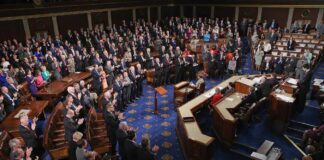August 20, 2019
 The self-reported use of marijuana by teenagers continues to decline nationally, according to federal data reported by the United States Substance Abuse and Mental Health Services Administration (SAMHSA).
The self-reported use of marijuana by teenagers continues to decline nationally, according to federal data reported by the United States Substance Abuse and Mental Health Services Administration (SAMHSA).
The agency’s 2018 report finds that past-year marijuana use by those ages 12 to 17 has fallen consistently since 2002, from 15.8 percent to 12.5 percent. Since 2012, when Colorado and Washington became the first states to regulate adult use access, past-year youth use has fallen eight percent.
By contrast, self-reported cannabis use by older Americans has risen during this same time period.
The federal data also reports a consistent year-over-year decline in the prevalence of so-called “marijuana use disorder” among teens – a finding that is consistent with other studies.
Commenting on the data, NORML Deputy Director Paul Armentano said, “Regulation and education is a more effective and a more preferable tool to discourage youth use and access than is criminalization.”
Separate evaluations of marijuana use patterns specifically in cannabis legalization states show little if any change in cannabis use or access by teenagers. Data published online in JAMA Pediatrics in July reported that states with “recreational marijuana laws were associated with an eight percent decrease in the odds of marijuana use and a nine percent decrease in the odds of frequent marijuana use” among teens.
For more information, see the NORML fact-sheet, “Marijuana Regulation and Teen Use Rates.”











